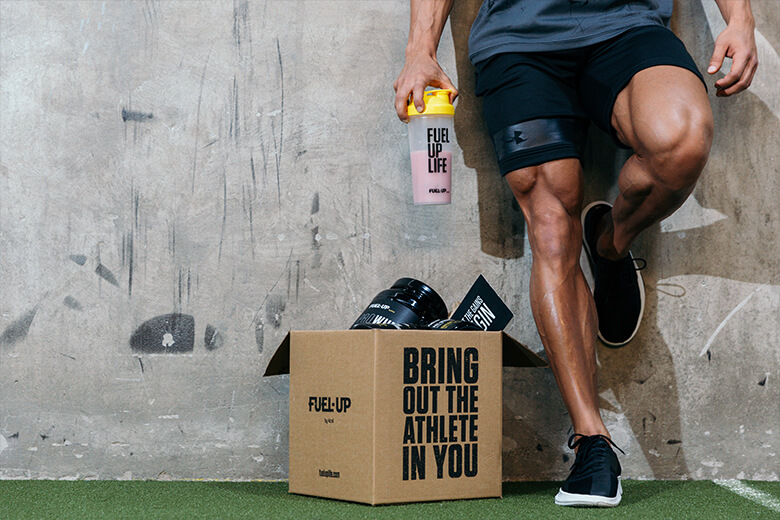Squats are one of the most effective lower body exercises. This basic move strengthens an impressive number of muscles, mainly the glutes, quads, hamstrings and calves. Plus they’re a functional movement, as they mimic daily actions like getting in and out of a chair. So, building your squat strength cannot only bulk up all your lower-body muscles, it can help you perform your daily movements with ease.
The one caveat: In order to get the most out of this all-star move, you have to pay attention to your form because even if one part of your form is off, it will impact the effectiveness and safety of your squat.
Keep your squats on-point by avoiding common mistakes, one of the best ways to make sure you’re safe is to watch yourself squat in a mirror and pay attention to how you feel once you correct your form mistakes.
Your Knees Cave In
One common squat mistake is for one or both knees to collapse inward as you lower into your squat.
The reason your knees cave in may be a lack of form know-how, but it can also be the result of a muscle imbalance. This is less of a ‘mistake’ and more of a risk. Muscle imbalances can increase risk of injury, and this knee position won’t give you the same benefit that a squat with correct form would.
Your muscle imbalances could stem from one (or more) lower body muscles, but the most common culprit is the gluteus medius or outer glutes.
The fix: If one or both of your knees cave in when you squat, focus on pressing your knees out to ensure they stay in line with your toes, Kotarak says. If you can’t squat without your knees collapsing, try reducing the weight or practicing bodyweight squats until you nail proper form.
To address any muscle imbalances in your outer glutes, make sure to foam roll and stretch all the major muscles in your lower body (glutes, quads, hamstrings, calves, inner thighs) before your workout. Keeping everything stretched and rolled out prevents tight muscles, which can decrease range of motion and also increase the chance of injury. Also, add a few targeted strength moves to your routine to build your outer glutes.
BANDED SQUATS
Loop a mini band around both legs above the knees.
Step your feet hip-width apart, or far enough to create tension in the band.
Pull in your ab muscles, bend at the knees, and push your hips back to squat down.
Keep your chest upright and spine neutral at all times.
Press through your heels to stand back up.
BANDED CLAMSHELLS
Lie on your side and loop a mini band around both legs above the knees.
Bend your bottom arm and place your head in your hand.
Then, bend both legs so your thighs create a 90-degree angle.
Keeping your hips stacked, engage your core and slowly pull your top knee away from your bottom knee, making sure to keep your feet together.
Squeeze your outer glutes as you lift your top knee as high as you can without rolling backward, then slowly lower your knee back down.
BANDED LATERAL WALKS
Loop a mini band around both legs at midcalf and step your feet hip-width apart (or far enough to create tension in the band).
Bend your knees to lower into a partial squat, keeping your abs in and chest lifted.
Then, take four controlled steps to one side, maintaining tension in the band the whole time.
Use your hips and glutes to pull the band apart, and try not to let the upper body rock back and forth.
Repeat on the other side.
You Lean Forward or Over Arch Your Back
If you lean too far forward or over arch your back while you squat, it may be a simple form mistake, or it may be because you added weight to your squats too quickly. In either case, it’s important to fix this mistake to decrease the load on your spine. Otherwise, you increase your chance of back pain or injury.
The fix: Try using a lighter weight for your squats, if needed. Then, focus on form: Pull your ab muscles in tight and keep your chest up, spine neutral.
Squat With Your Knees Over Your Toes
Some people make the mistake of allowing their knees to drift over their toes while they lower into a squat. Oftentimes, this happens when you squat with your weight in your toes, as opposed to your heels. Squatting with your weight in your toes makes it tricky to activate the right muscle groups, and also adds more stress to your knees, increasing the likelihood of knee pain and injury.
The fix: As you’re squatting, keep your knees in line with your second or third toe, and press your weight back into your heels to protect your knees. Then, drive through your heels to press back up to standing.
You Go Too Heavy Too Fast
Squats are a great exercise for all fitness levels but one common mistake is people trying to advance the exercise by adding too much weight. If you add too much weight to your squats, your form will inevitably fail, and you’ll wind up making one (or more) of the common form mistakes above. Any of these mistakes can increase your chances of injury — or, at the very least, ensure you don’t get maximum benefits from your squats.
The fix: If you’re new to squats, start with bodyweight-only variations until you get your form down. Then, slowly add weight in the form of dumbbells, kettlebells, sandbags or a barbell (without weight plates). Even if you’ve been squatting for a while, pay attention to your form and decrease weight a bit (or do fewer reps) if it begins to breakdown.
So How Do You Squat
There are many different squat variations to choose from, but this basic squat is a great place to start. Here’s how to do it:
Stand tall with your toes facing forward and feet shoulder-width apart (or slightly wider).
To initiate the movement, tighten your core, bend your knees and push your hips back as if you were going to sit in a chair, making sure to keep your knees in line with your toes the entire time.
Keep your chest lifted and spine neutral as you squat down.
Once you reach your desired depth (aim for parallel), press through your heels to return to standing.
Show us what you’re working with, tag us in your squat pics on insta @fueluplife




Leave a reply